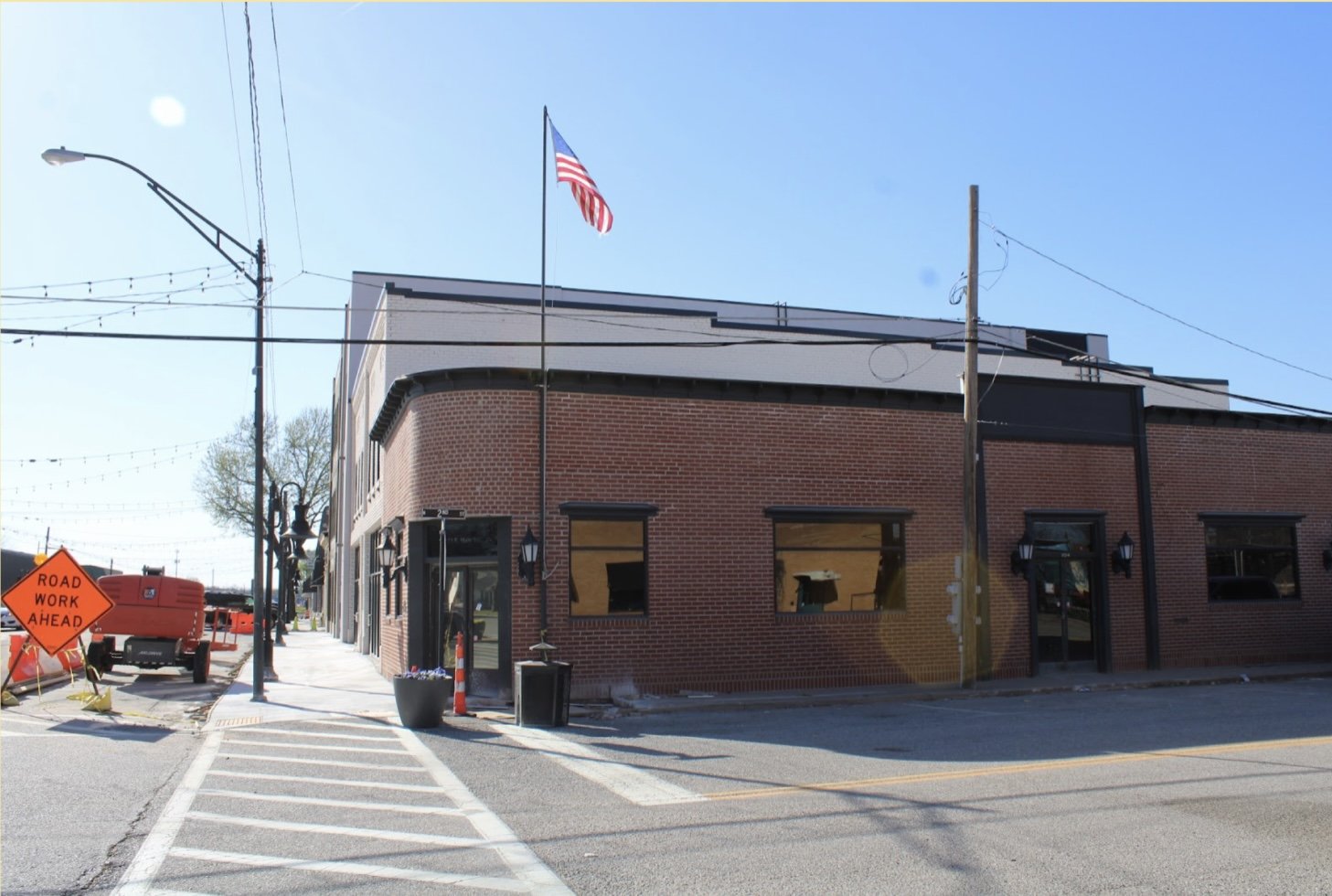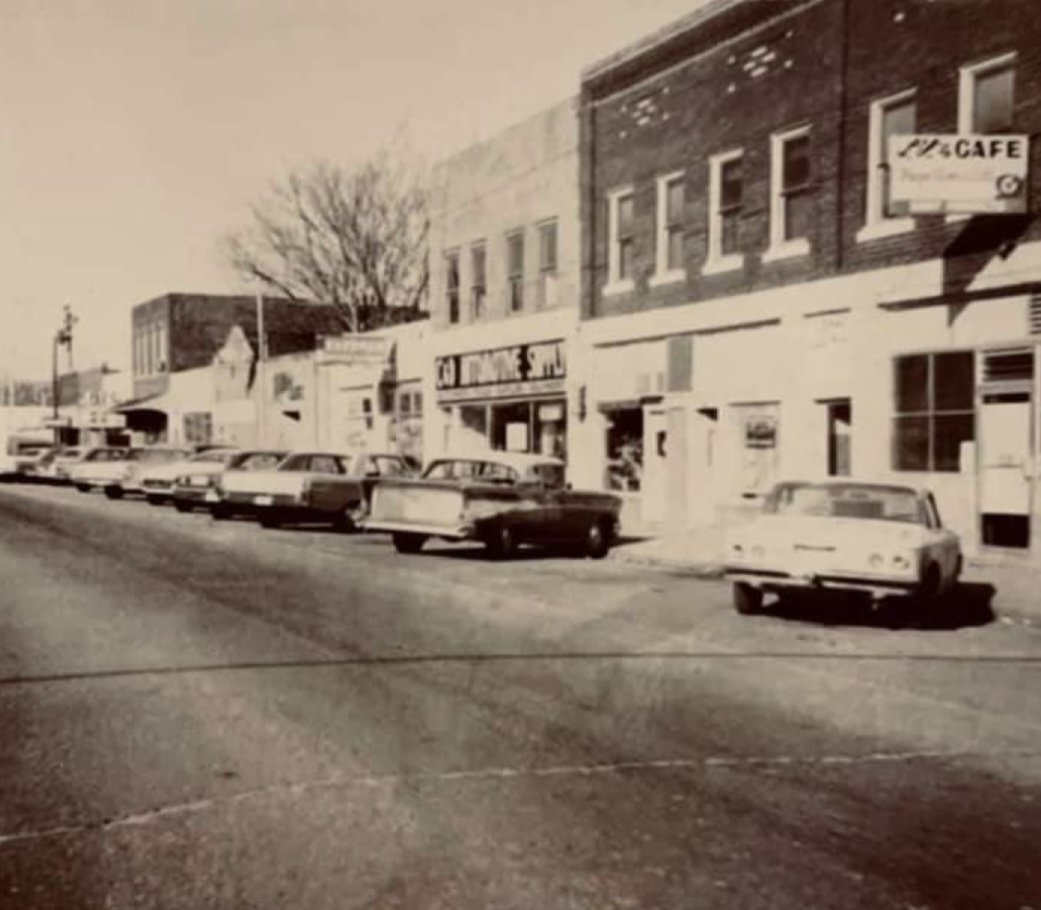A Pictorial History of Jenks
By Joshua Taylor
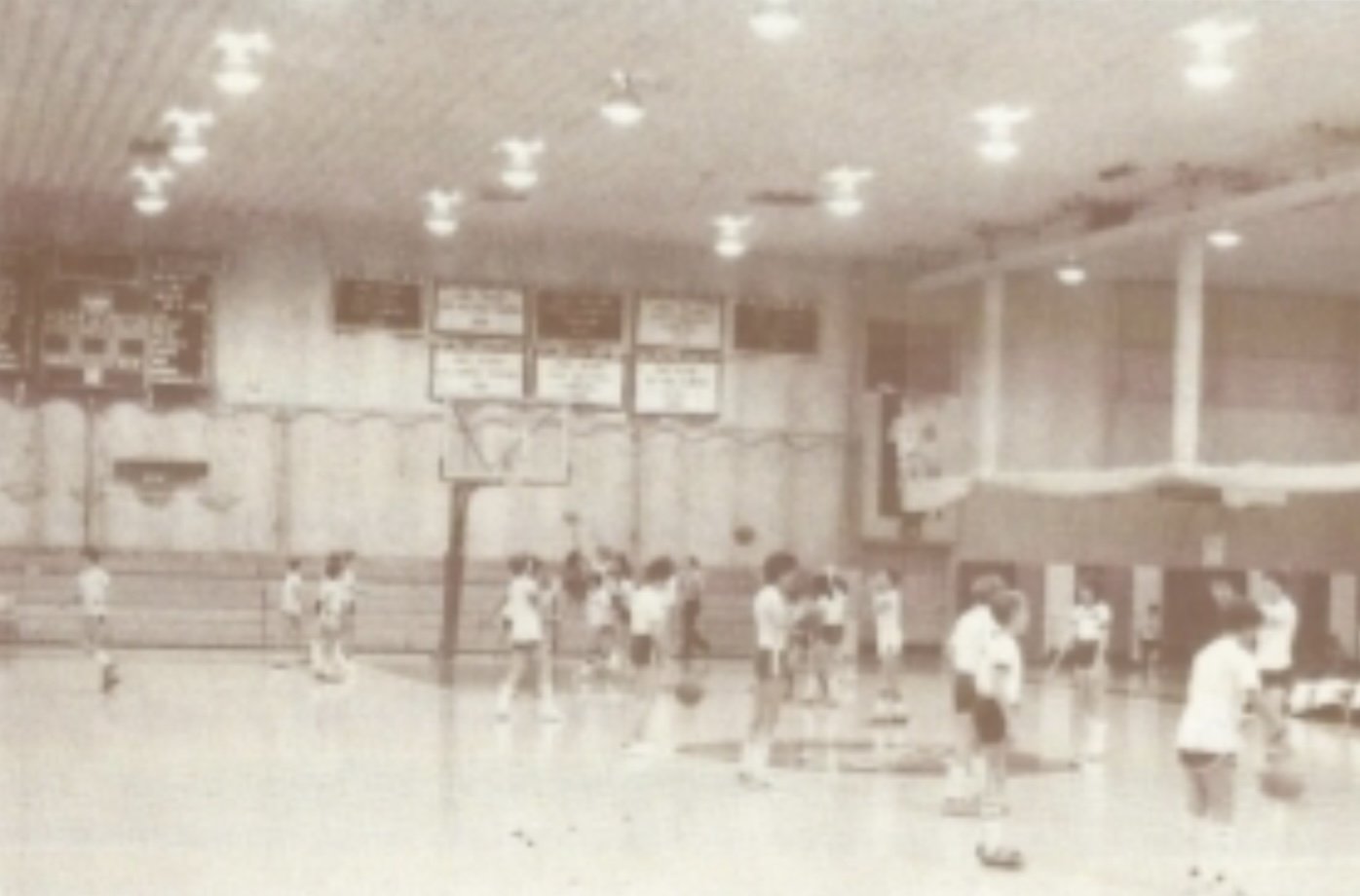
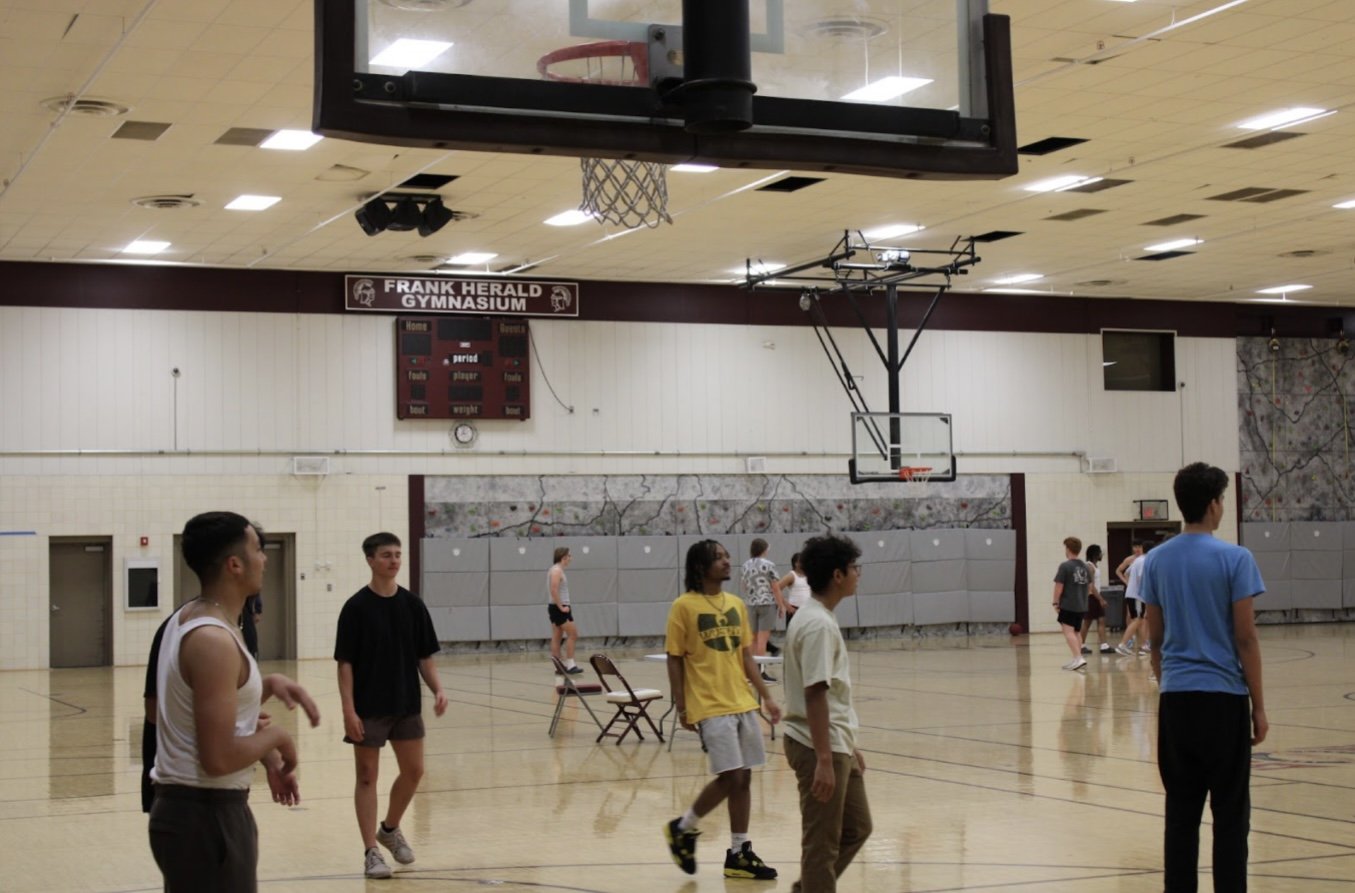
Frank Herald Gymnasium (now known as the Trojan Activity Center, TAC for short) in the mid-1970's. The gym was completed in 1973 vs.The TAC today.
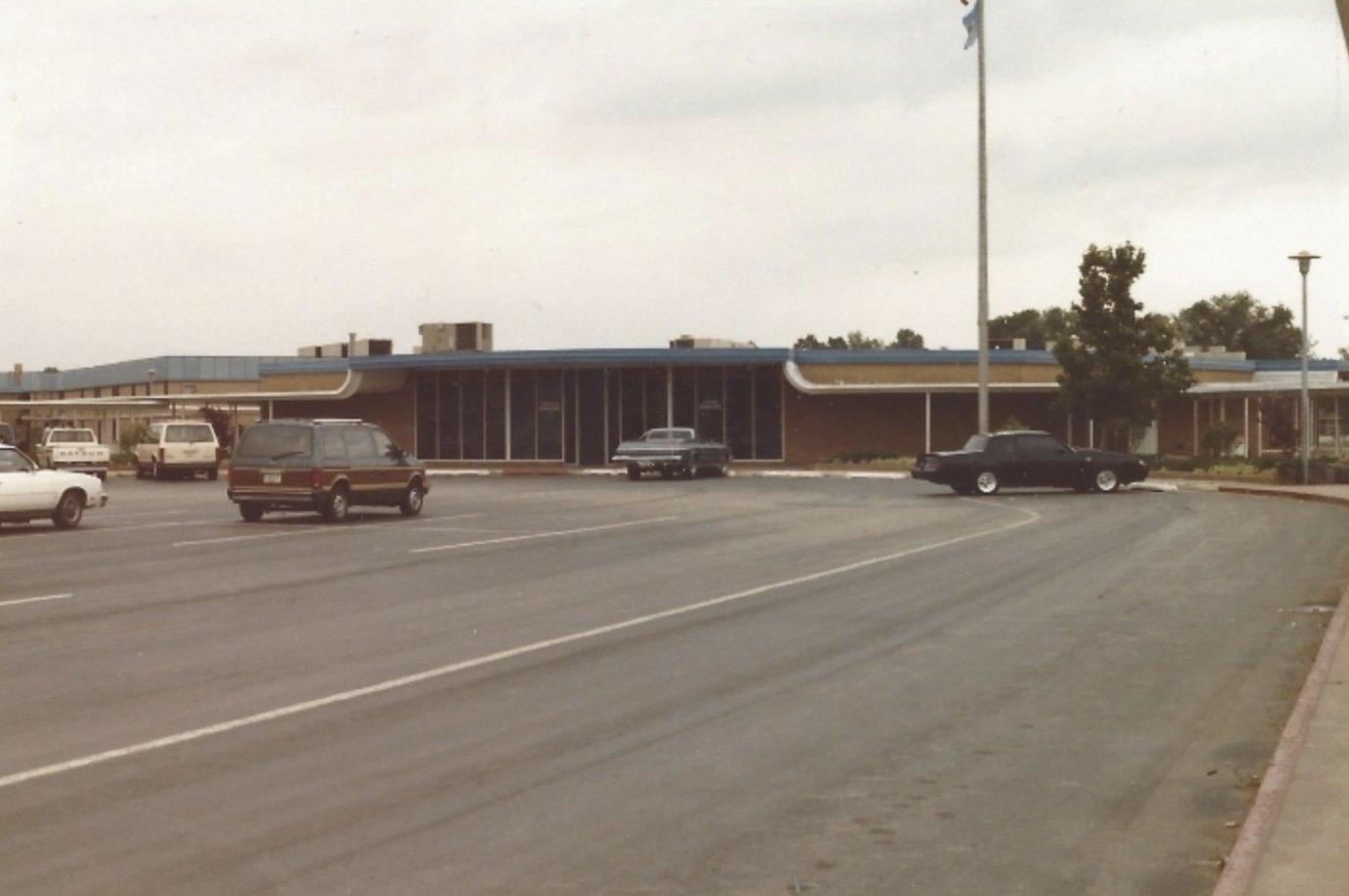
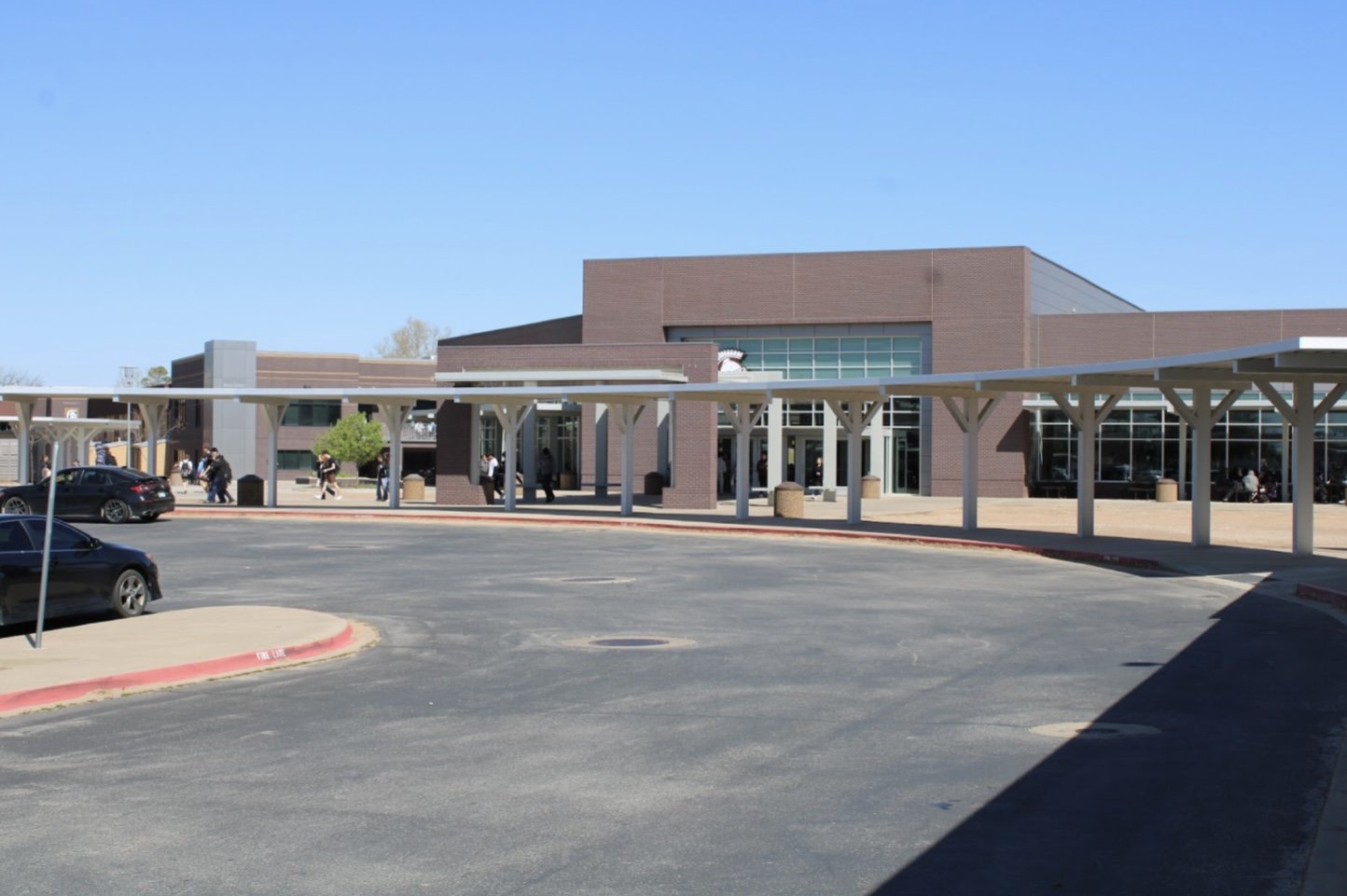
The high school cafeteria constructed in the late 1960's. This cafeteria remained until 2015, when it was demolished in order to build the new Jenks Dining Hall vs. The Jenks Dining Hall, completed in 2017.
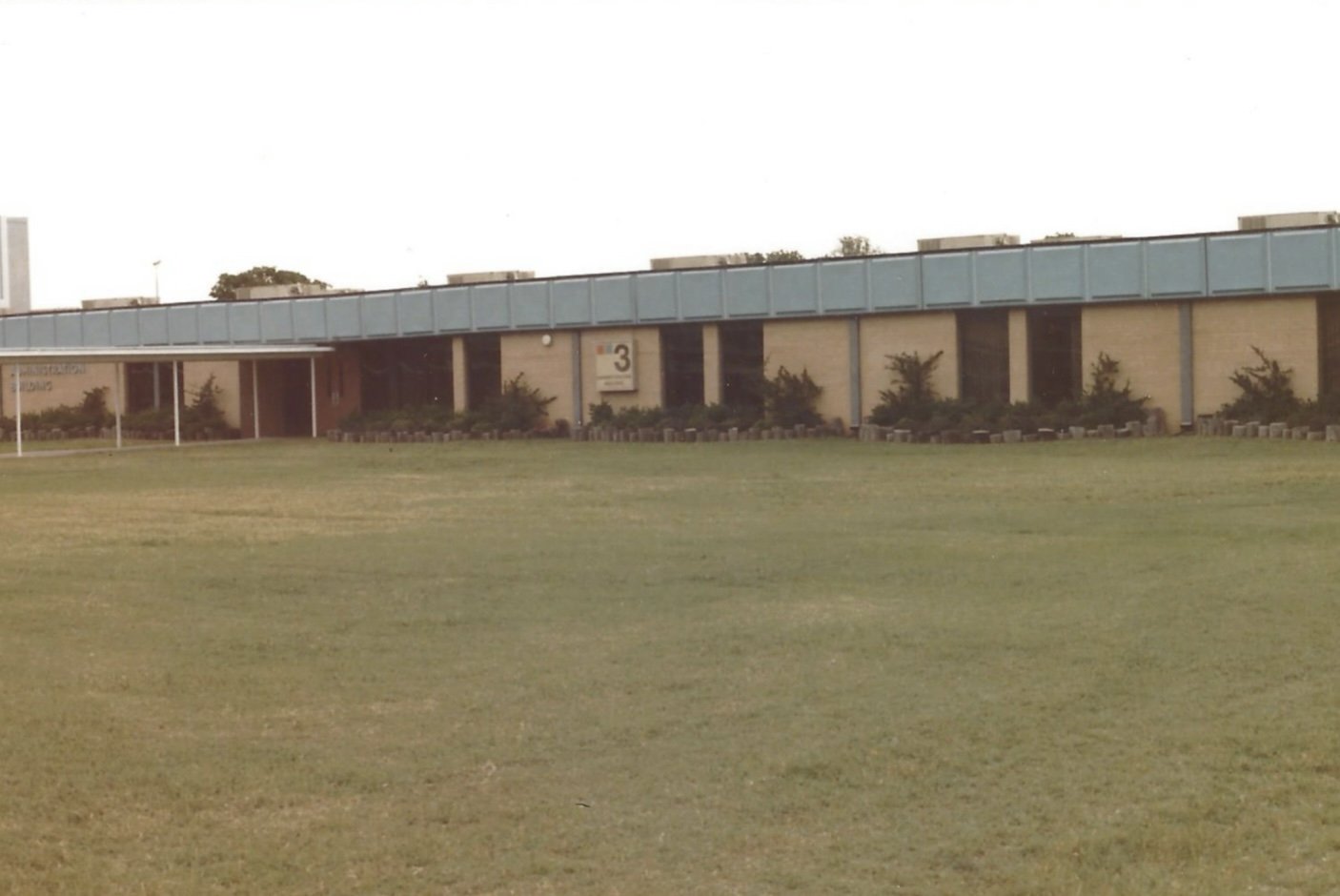

The Math and Science Center.
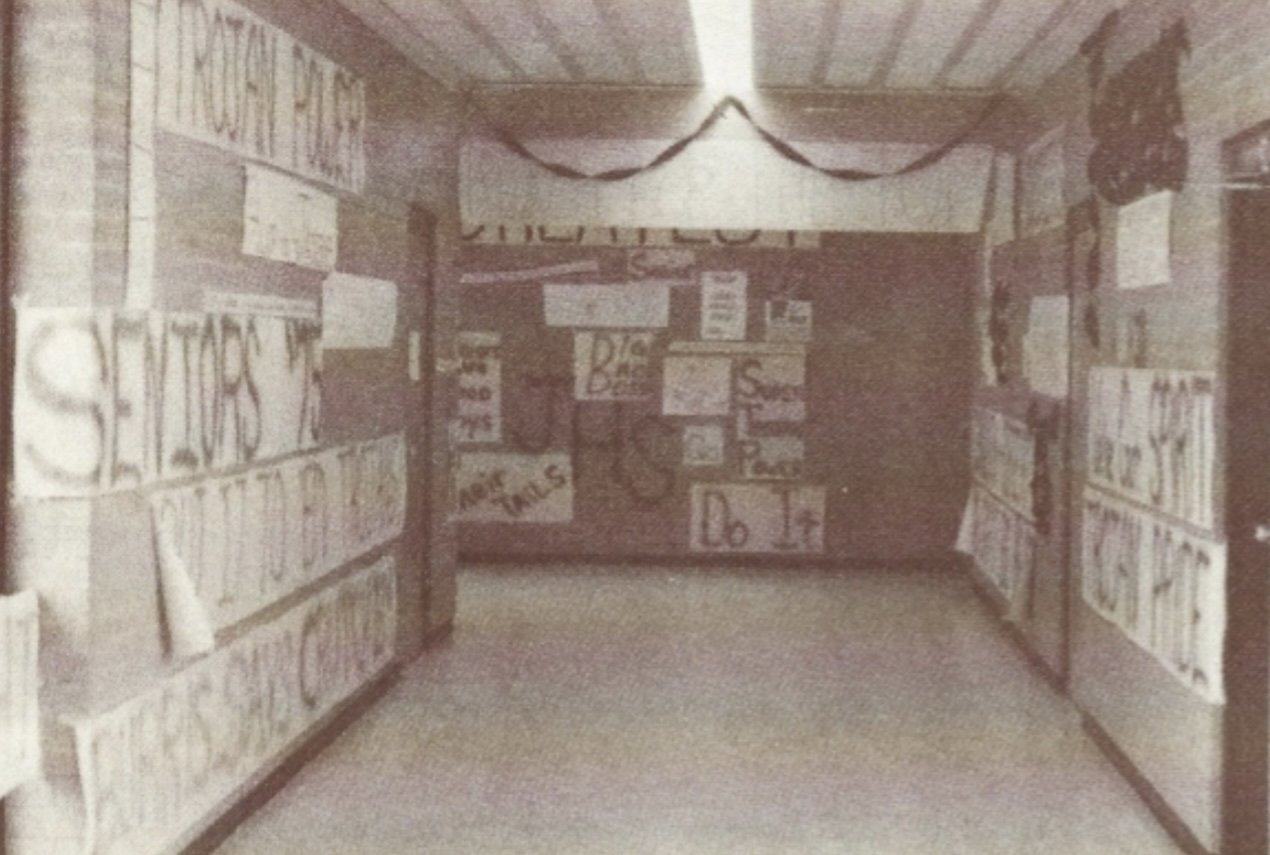

Taken in 1975, this picture features Trojan spirit banners on the walls of a hallway in Building 6, most likely in preparation for an upcoming football game. In 1975, Building 6 was the main and the only high school building in the district vs. The same hallway today.
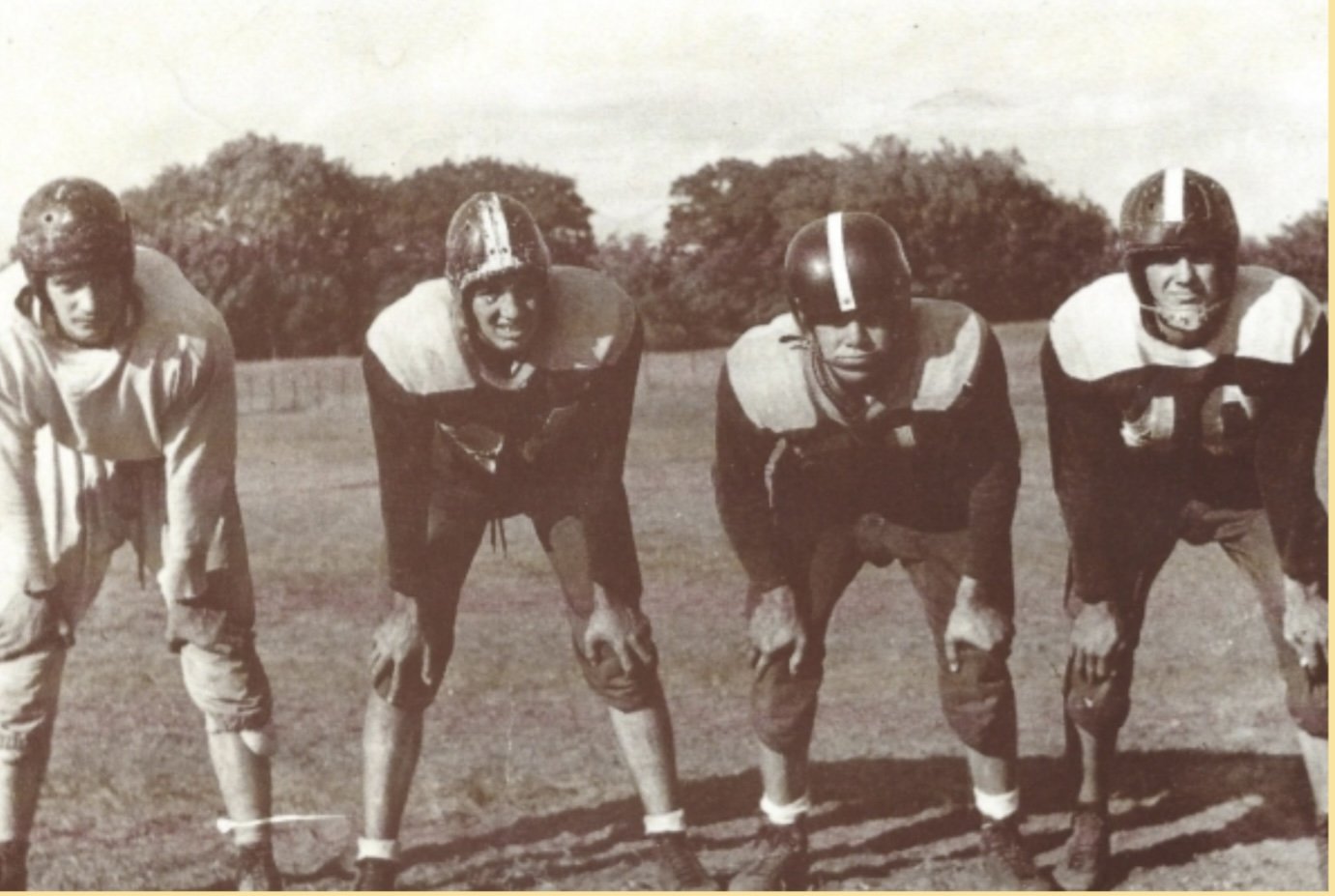
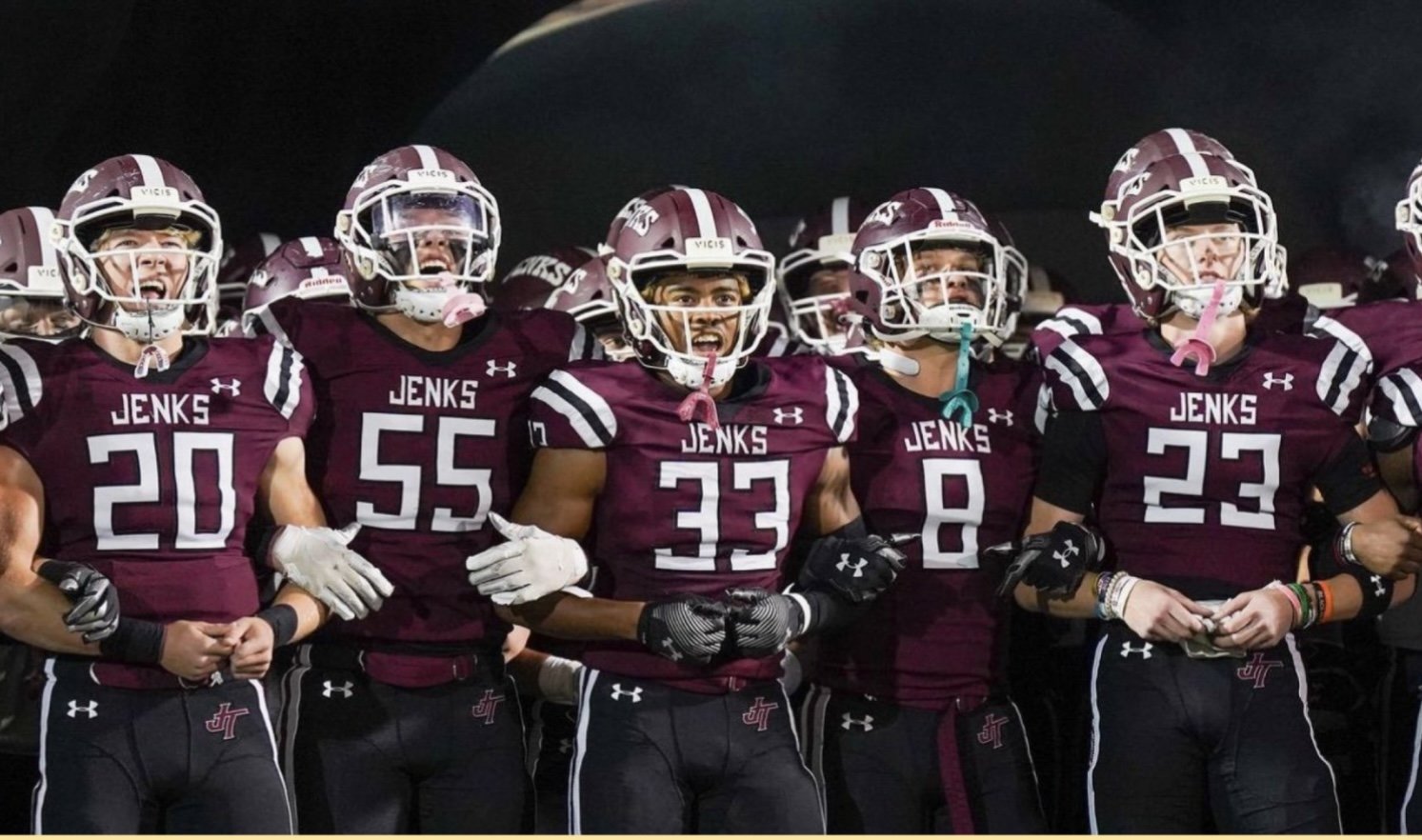
Four Jenks football players in the 1960's, taking a break during practice. This picture comes over a decade before the school would win it's first state championship and preceded Jenks' football dynasty vs. The 2023-24 Jenks Trojans football team. Though falling short of a championship in a 49-21 loss to the Bixby Spartans, it marked the 37rd all-time championship appearance by the Trojans.
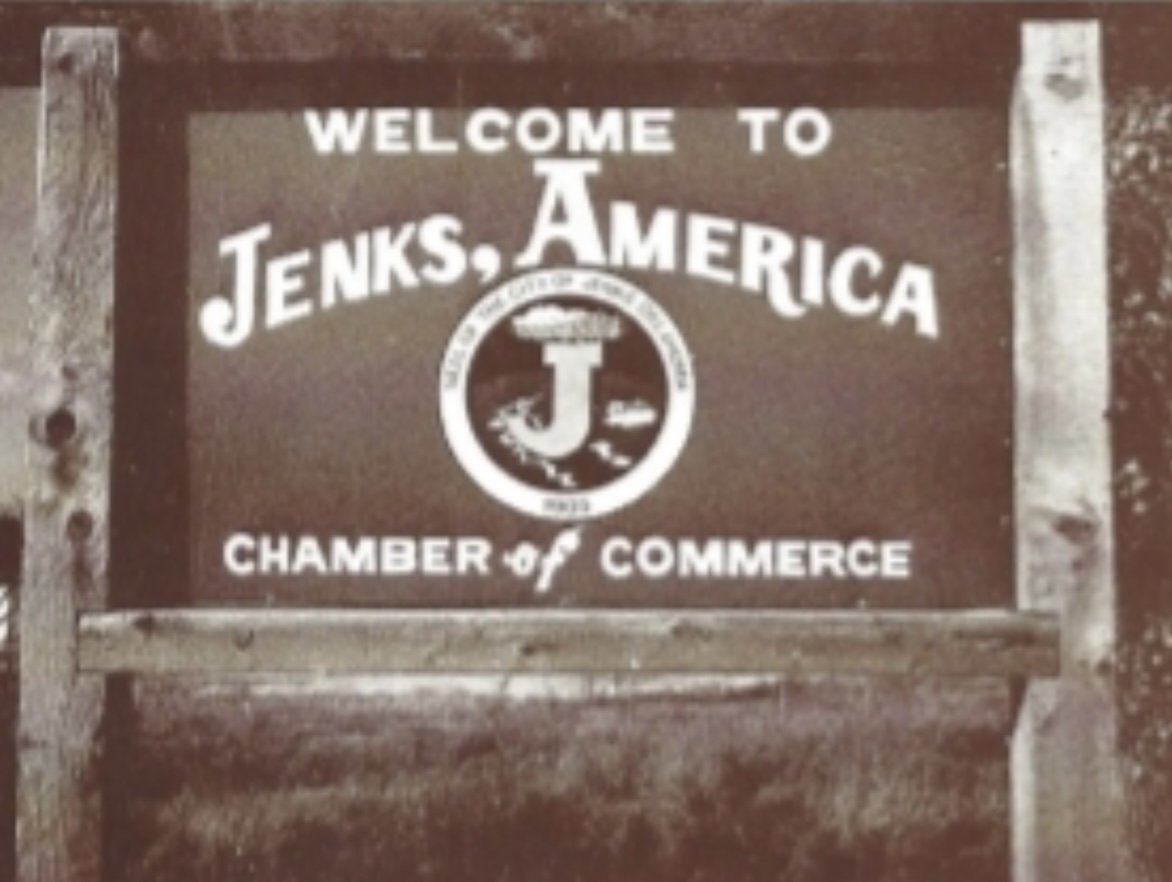
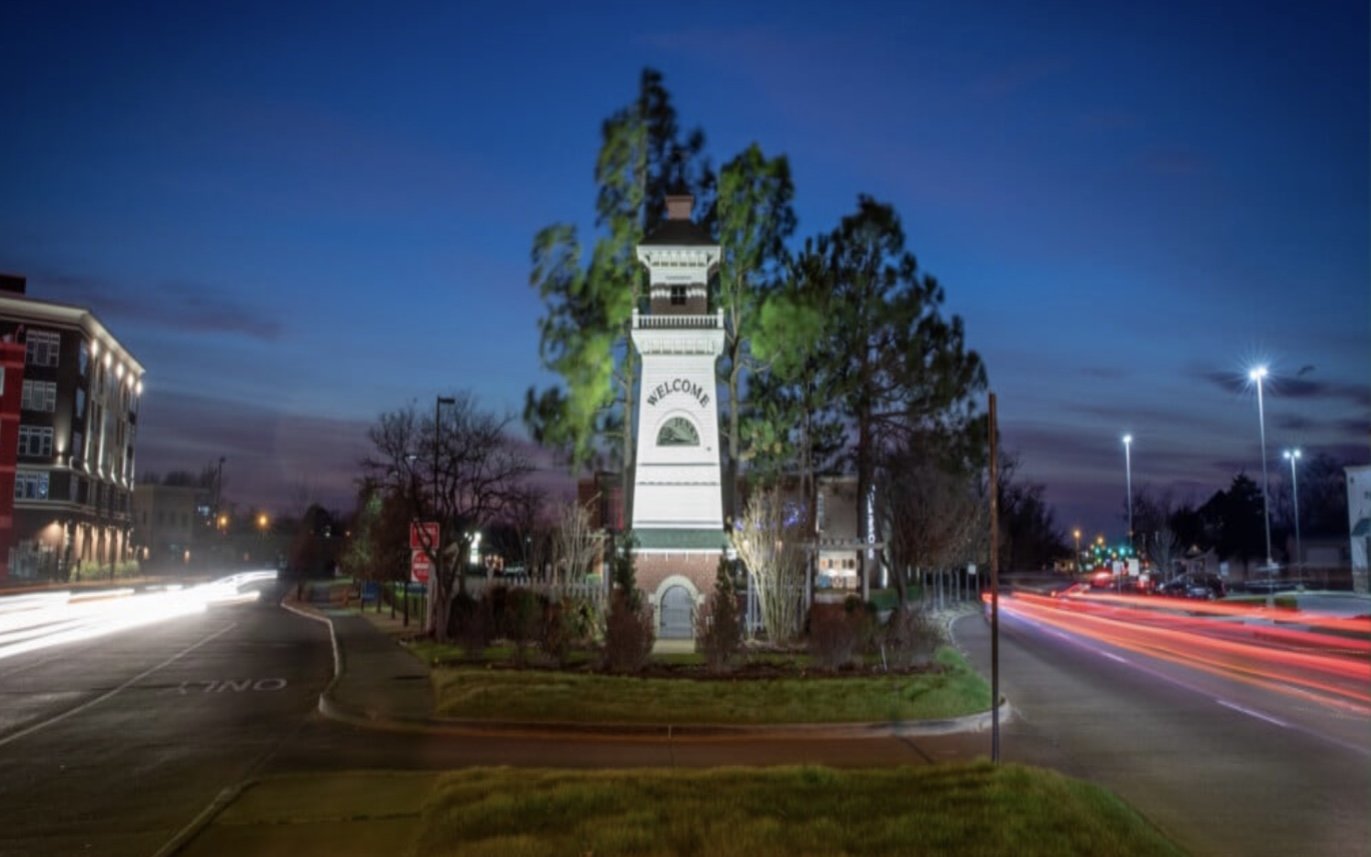
A welcome sign sponsored by the Jenks Chamber of Commerce, circa. 1980 vs. The Jenks Lighthouse has stood for over 20 years as a "beacon of welcoming" at the entrance to the city.
A cheerleader pyramid from the late 1970's at Hunter-Dwelley Stadium, now known as Allan Trimble Stadium.


The Building 6 Auditorium in 1960, shortly after it's opening. Built as a replacement for the original JHS auditorium, which burned down after an electrical fire in 1951, the auditorium was the main space for theater shows, choir concerts, special events and ceremonies, and even the very first JHS musical. The auditorium was the only theater on campus for over twenty years until the completion of the Jenks Performing Arts Center in 1983 vs. The Building 6 Auditorium today. The auditorium has little resemblance to the original space, as it has been largely updated and has even had the stage completely rebuilt and redesigned. Today, it is used for club meetings and special events.


The Jenks Performing Arts Center under construction in 1982. Built on a $5 million budget approved in 1980, the Jenks PAC opened in 1983. At the time, the theater sat over 1,600 people and was widely considered to be the finest high school theater in the state of Oklahoma. An article from the Tulsa World referred to the PAC as ranking "only behind Tulsa's Performing Arts and Oral Roberts University's Mabee Center" vs. The PAC today. The theater is largely unchanged except for the addition of the Trojan heads on either side of the stage and new carpet.


The PAC in 1983 after it's opening vs. The PAC today. The theater is largely unchanged except for the addition of the Trojan heads on either side of the stage and new carpet.
The location of the first light pole in the city, installed in 1906.
George's Cash Store, the one of the first stores in Jenks, resided in the same building that American Heritage Antiques currently operates. The oldest building on Main Street, William George owned and operated the store for over twenty-five years. His daughter, Linda George, was an elementary school teacher at Jenks for forty-eight years, the longest serving teacher in the district's history. She lived to be one hundred years old and is considered to be one of the most important and well-respected Jenks citizens.
Linda George standing in front of her home, which still stands a block south of Main Street. When Ms. George passed away in 2010, the Jenks Public Schools Foundation honored her by naming a scholarship in her honor. The scholarship goes to a JHS Senior who plans on going into education.
A picture of Morris Engel, a football player and JHS graduate in the 1920's. Engel's grandson, Vic Vreeland, was at one point the mayor of Jenks.
The high school campus in 1939. Pictured at the top left is the Rock Gym, which was completed in 1937 and built as a W.P.A. (Works Progress Administration) Project. Pictured in the bottom left is the elementary school, the junior high to the far right, the high school in the middle, and the auditorium in the back of the high school. The campus also had a power plant.
Main Street Jenks in the 1940's. Pictured are a grocery store, hardware store, pharmacy, and the former City Hall.
The Tedford Insurance Building. Newly renovated, the building has had some additions, including retail and restaurant space. On the far right is the former City Hall building, which is also being renovated to become the newest McNellie's restaurant concept, City Hall Steak and Cocktail.
A plaque on the Tedford Insurance Building.


The undefeated 1937 Northeast Six Conference Championship Jenks football squad vs. The 2023 Trojan Football team.
Two ladies showcasing fashion of the 1940's. Behind them is the building which currently houses Got Wood Axe Co.
Students meet for a Spanish Club meeting in the early 1960's. This picture was probably taken not long after the opening of the new high school campus.
Hunter-Dwelley Stadium in the 1960's. Named after a 1920's Jenks star basketball player, the stadium is now known as Allan Trimble Stadium, named after the legendary Hall of Fame coach who passed away in 2020.
Main Street Jenks. Amid revitalization efforts by the Ten District, Jenks Main Street looks a lot different than it used to, with businesses like City Cycles, Got Wood, and the newly opened Social, a dueling piano bar/restaurant and live music venue.


Parker's Square in the 1970's. Parker's Square stands where the original Jenks High School stood until the late 50's. Pictured is Wacker's, a popular grocery store. River City Trading Post currently operates in the same space vs. Parker's Square today. The same sign still remains, albeit being worn from age. Notice the concrete pillar next to the streetlight: this is all that remains of the original wall that surrounded the original high school campus.
A building on Main Street in the 1930's.
This building stands next to the Jenks Restaurant and Roark Acres Honey Farms. Notice that part of the building has been practically "cut in half.”


The Sooner Building in the mid-80's. The Sooner Building was the first building constructed on the current high school campus. Completed in 1958, the building originally served as a cafeteria before being converted to an elementary school vs. The Sooner Building which now serves as the Jenks Alternative Center.


The original Jenks Swimming Pool, completed in the 1970's. This pool served as the main swimming pool for the Jenks Swim team until the completion of the Jenks Aquatic Center in 2010 vs. Little has changed with the swimming pool in 50 years. Today it serves as a facility for swimming lessons and practices.


An onlook of part of the campus from the mid-80's. The two-story building addition to Building 6 was added in the early 2000's vs. Building 6 today.


The original Jenks bridge. Built in 1910, it was the main pathway from the east to west side of the river for almost four decades. The bridge was wooden, narrow, and somewhat poorly built, making it relatively dangerous, so it was finally replaced with the current Jenks bridge in 1948, along with a new pedestrian bridge. A portion of the bridge still exists at around 86th and Lewis at a former trailer home park vs. The current Jenks bridge at sunset.


The former Jenks City Hall. The building was built sometime in the early teens, and served as the town's government building for decades. Until recently, it was a part of Tedford Insurance's space vs. The former City Hall today. Currently under renovation, the building will house the new City Hall Steak and Cocktails, a concept of the McNellie's Group.
Main Street in the late 1950's.
